wow! My soldier is looking way better than before! I mean, look at the first render and compare it this:
[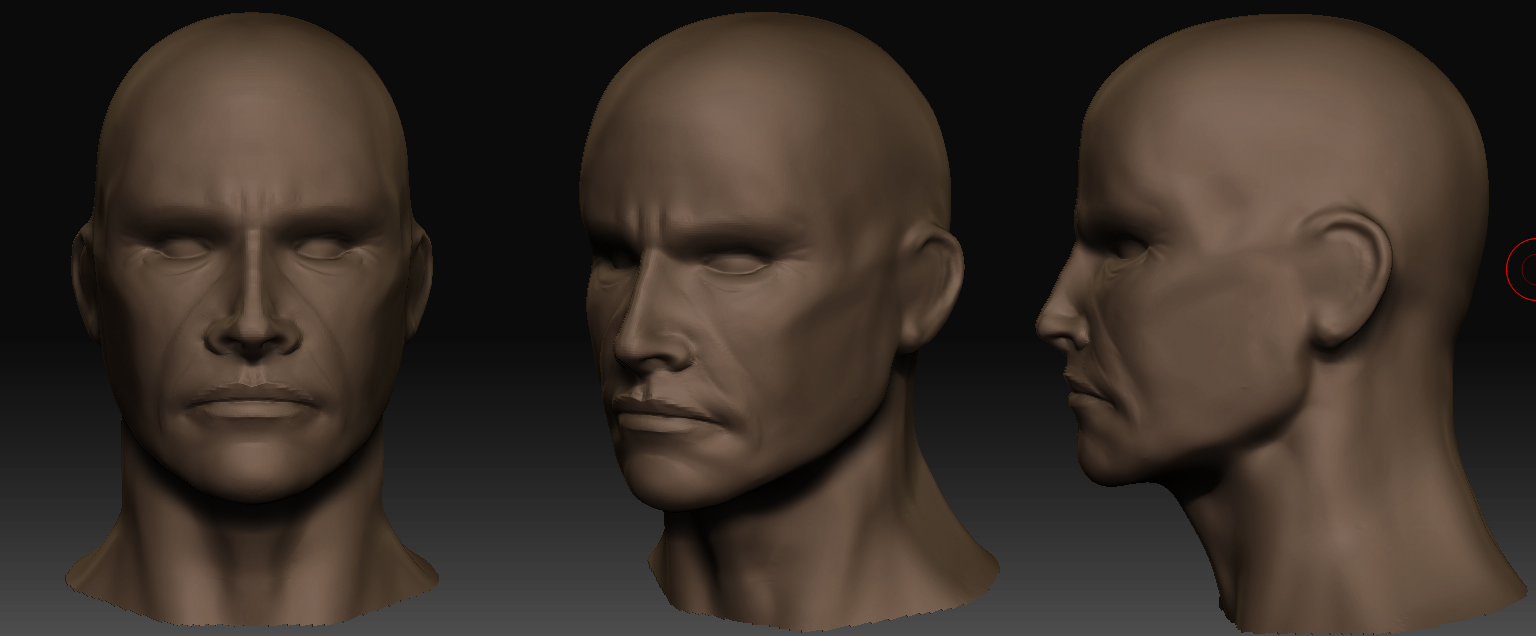 ]
]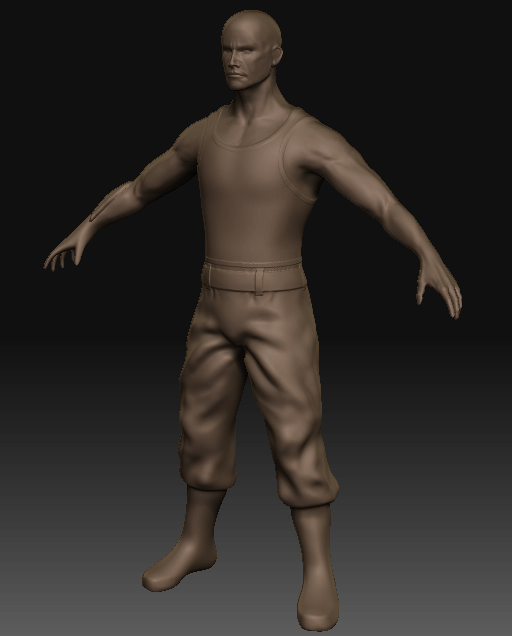
Btw, are the images to big?
wow! My soldier is looking way better than before! I mean, look at the first render and compare it this:
[ ]
]
Btw, are the images to big?
Buy the way as an artist you will never be totally happy lol:) get used to it! as a pro you learn to never fall in love with your stuff! just keep working and moving ahead. the more you do the better you get. I think he is looking great. a vast improvement! keep it up! as for the head only a few minor things. the nose bridge may be too thin. and his ears are pinned. pull em out a bit. remember reference reference reference! besides that you are on the right track!
Great job and enthusiasm!!!
In fact, I’m very nitpicky with 3D stuff. As you said, I’m never happy, there is always something to improve.! Thanks for the criticsm, I’ll work on it right away! 
Yes, I think his head was too square before. Looking much better now.
By best guesses from your latest pix? Cheekbones need more definition, nostrils too wide, bridge of the nose too straight and should dip in just before it joins with the forehead.
Getting yourself some anatomy reference photos off the web will go a long way towards helping you out.
All this with a grain of salt, please!? I’m new to ZBrush, and just trying to point out what I think as best I can from my very skimpy knowledge of anatomy. And I mean VERY skimpy. 
Hi!,
Johannes you are really helping out a lot! Thank you very much! I’m not sure if I understood everything you said, tho. It’s probably my fault, as I’m not perfect with english. I have sketched a bit over the model to make sure I understood correctly. In the first picture I just painted the different parts so that everybody can identify them easier. In the second image, the pink parts, are the parts I think you advised me to change. The partial eminence should begin where the zygomatic arch does and the rasmus should have some curving. I took this as a reference:

[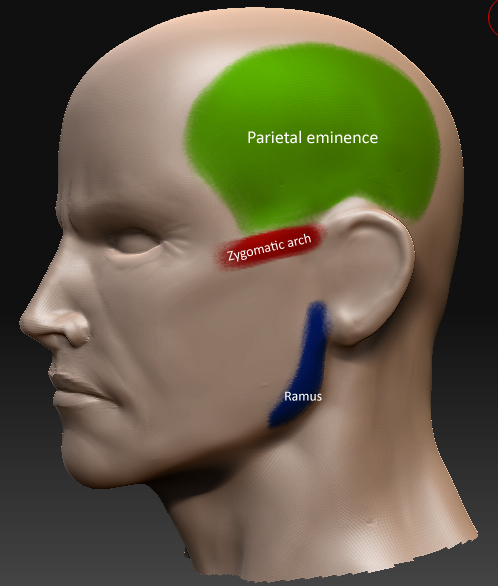 ]
]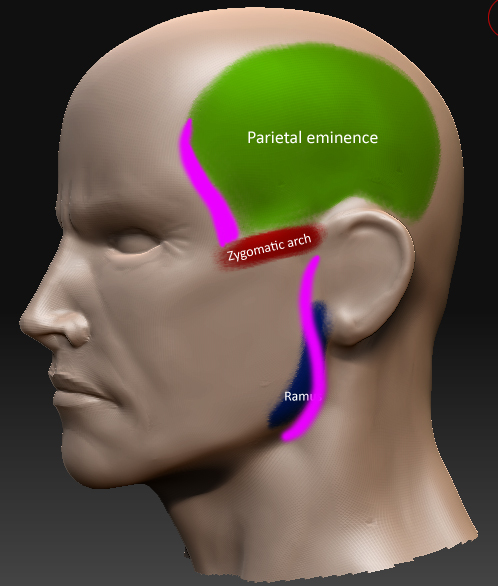
I also think the ear should be a little bit higher.
i too am a gnomon alumni, getting the dvds or vids is a great idea. its always advantagous to see othe peoples work process on thw way to developing your own. not to mention inspiring. well worth the money. mine are almost worn out completely:) your on the right track!
Hi!,
Johannes Huber
P.S. Monkeymuscle; I’m glad I’m not the only one who’s almost worn out his Gnomon dvds;)
I didn’t notice at all! I thought you probably were American, since your profile says you are from L.A.
Absolutely! Do whatever you want with them. 
At first I was kinda shocked. :lol: But I’m quickly getting used to it. As you say, it does make sense to name the things properly.
I just love 3D, and every new thing I learn makes me love it even more. So I am open for critiques. I need them and I like them. Monkeymuscle and you are making me a better artist, so let me thank you once again! (I’ll never get tired of this) Can’t wait to hear from you (or anyone else) soon!
Edit: Btw, are you German? Johannes sounds pretty German to me 
I have left the head to the side for now, and have taken some time to design the bionic arm. I quickly mocked something up. Actually, I’m pretty happy with my drawing skills. I thought I didn’t have any at all!
[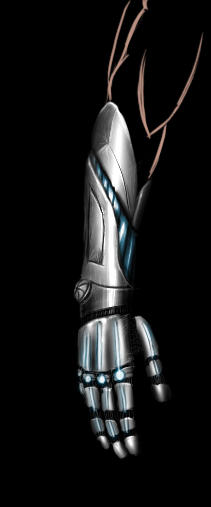 ]
]
Do you think I should model this in Zbrush or 3dsmax?
Hi!,
Talk to you soon,
Johannes
hehe, I knew somebody would come up with this. It is definatly my fault, as I didn’t specify what exactly I was going to do. The soldier I’m doing won’t have any armor, I wanted to do a little scene, really basic. Let me explain to you…
Have you seen Black Hawk Down? There is a scene where a soldier is playing Baketball at the base during his free time. I wanted to do something similar. I just wanted to pose him, standing quite still, with the basketball under his left arm looking at the horizon, as if something was approaching and he didn’t recognize it very well (maybe an alien ship or something, haven’t decided yet.) By doing such a scene, I’m transmiting a familiar image, like as if nothing had really changed. Basketballs still look the same, and it’s not the end of the world (not yet atleast.) But at the same time I could show a glimps into the future. The human race has evolved in a fashion way. Not only is the tecnology awesome, but design is always more and more important. I was probably inspired by Dubai. You look at that city, and it’s just great. They have achived an awesome style. It looks both, futuristic and beautiful. So the arm was going to represent the future and the basketball would represent no big change at all. The soldier himself should “rerpresent” both concepts, that’s why I’m going to put him some slightly futuristic clothes. I was also thiking of adding some kind of future fighters in the background flying to the direction the soldier is looking, in order to create some dynamism.
I’m not a fan of the whole post apocalyptic thing. I think the idea has been used too much… specially with Mad Max in the 80s. What do you think?
Hi!,
Johannes
So here is a little update. Been busy rendering my Darth Maul model for my demo reel.
I think it’s starting to look the way I imagined. I’m having some trouble with the eyes, tho.
[[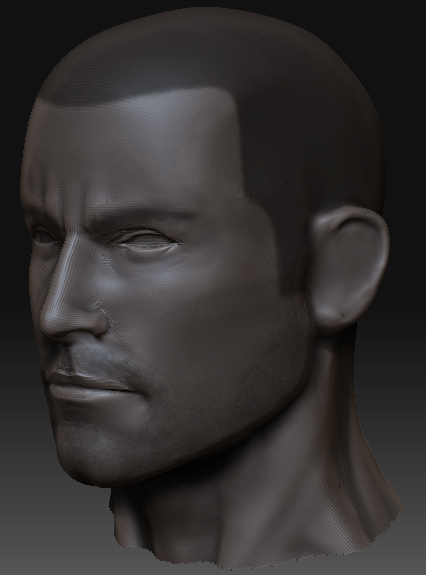 ](javascript:zb_insimg(‘71084’,‘11.jpg’,1,0))
](javascript:zb_insimg(‘71084’,‘11.jpg’,1,0))
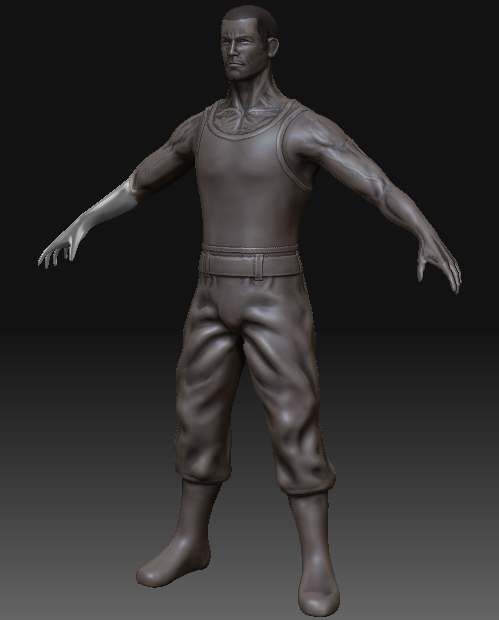
I’ve been paying a bit with the materials and I’ve also done some work on those boots.
[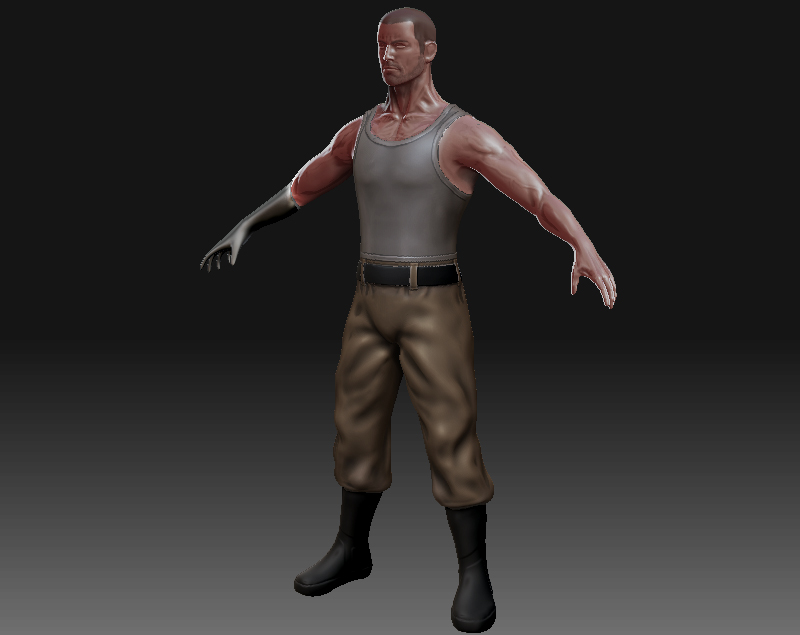 ]
]
I’ve pulled out those eyebrows a little bit and I have finally sculpt the ear. Is there something wrong with the eyes?
[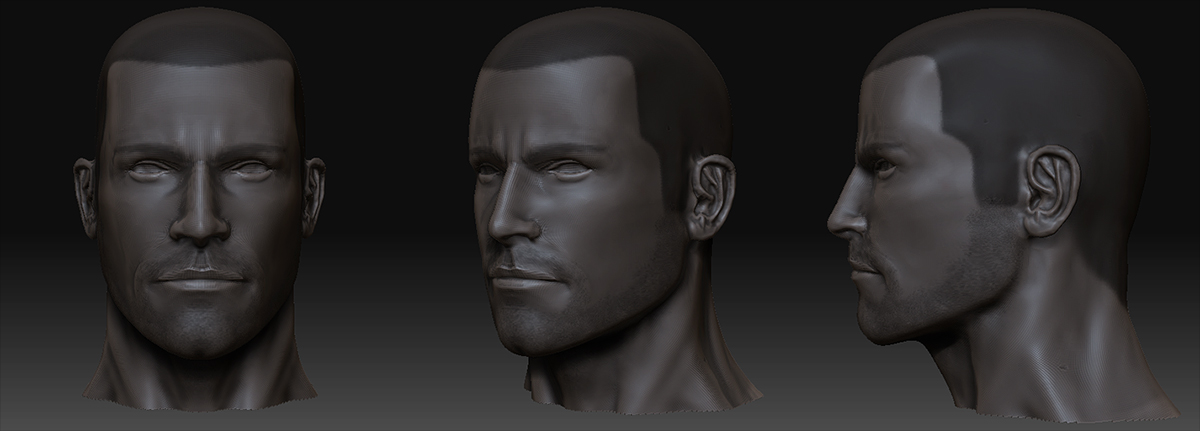 ]
]
Hi!,
Johannes
Thanks for the C&C! I haven’t touched the eye again, tho. Yesterday I retopologized the guy. This is exactly the workflow I followed:
-Retopologized the head in Zbrush and exported it
-I also exported the first subdivision of the whole model
-I then took both exported meshes (head and body) and “stiched” them together in 3dsmax.
-I exported the new mesh as an obj
-In Zbrush, I projected the details of the original ZTool into this one.
Now I can still fix some little things such as the eyes… and I’ll add nice detail to the skin (but I doubt my computer will be able to handle it, so I will have to use Photoshop)
Oh! I’m woried about the next big step: Unwrapping… I have no idea how I should do this. I suggest this workflow:
-Export the first subdivision as an obj
-Open it with headus UVLayout and unwrapp it
-Export it again as an obj
-In Zbrush replace the lowest subdivision with the obj
Now this sounds fine, but I’ve doing some tests… and it seems Zbrush scres the vertex order… or maybe it’s UVLayout… or the obj… I have no idea.
So instead of doing all this I suggest an alternative workflow:
-Export the first subdivision as an obj
-Open it with headus UVLayout and unwrapp it
-Export it again as an obj
-In Zbrush project the details of the original model on the new unwrapped obj
Everything should go well, right? I’m just projecting (not replacing) the model. The unwrapp shouldn’t get screwed up, right? Or maybe it does…
What do you think? Btw, I highly recommend headus UVLayout.
[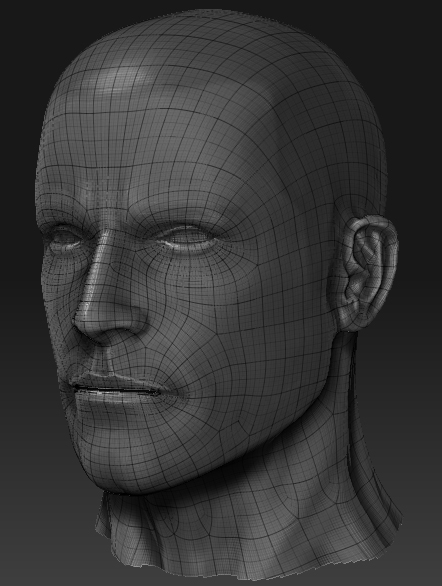 ]
]
Just a tip on the UVLayout question…instead of choosing ‘save’ once you’ve
unwrapped it, choose ‘update’ and the point order will not be touched. Then
when you re-import back in Z3, select the one that’s got the ‘-uvlayout.obj’
extension.
cheers. 
WailingMonkey
thanks for the tip. But it isn’t working. Check out the thread I just created about this problems I’m having.